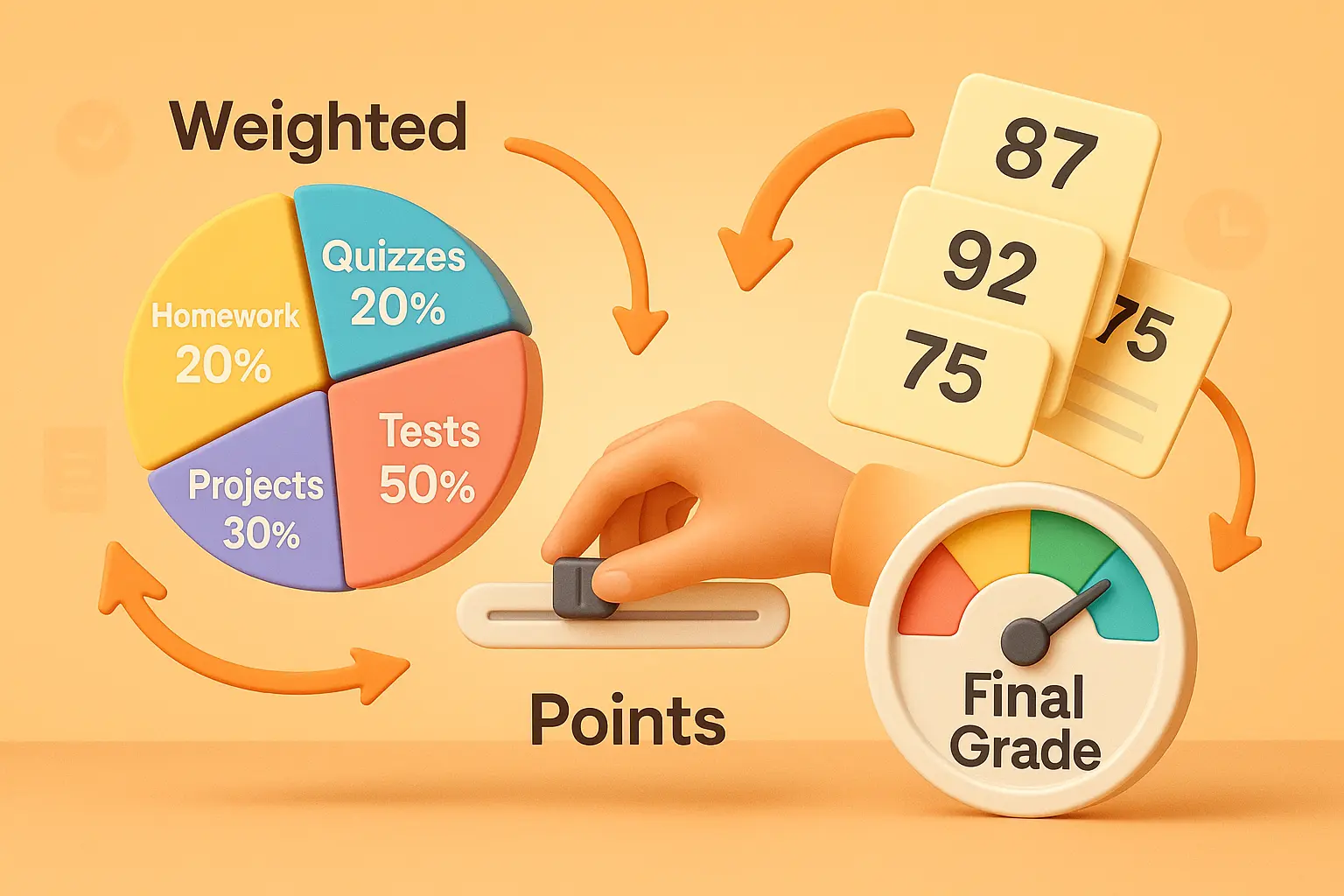In Texas, ADA eligibility Code 4 means ineligible full-day (served ≥4 hours) and Code 5 means ineligible half-day (served ≥2 and <4 hours). Both codes are non-funded; choose 4 vs 5 strictly by minutes served and document the reason for ineligibility.
Estimated reading time: 6 - 7 minutes
Who this is for: Texas teachers, attendance clerks, and PEIMS staff looking for a clear Code 4 vs 5 explanation aligned to TEA SAAH.
TL;DR
- Code 4 = Ineligible, Full-Day — student is served ≥4 hours but not eligible for ADA funding.
- Code 5 = Ineligible, Half-Day — student is served ≥2 and <4 hours and not eligible for ADA funding.
Both codes mean no ADA funding for that day; the difference is the amount of instruction provided and documented.
Why this matters
Attendance coding drives funding and audit readiness. The Texas Education Agency’s Student Attendance Accounting Handbook (SAAH) defines the rules districts must follow; miscoding 4 vs 5 can lead to findings, corrections, or lost funds. This guide translates the official language into quick decisions you can use immediately. This guide follows TEA’s SAAH 2025–2026 and PEIMS E0787 to help Texas schools avoid miscoding and audit issues.
The difference between Code 4 and Code 5
Code 4 – Ineligible Full-Day
Use this when a student receives at least 4 hours of instruction in a school day but does not meet eligibility requirements for ADA funding.
Examples include an ineligible Pre-K student attending a full day or a student who continues enrollment but no longer qualifies for ADA funding.
Code 5 – Ineligible Half-Day
Use this when a student receives at least 2 hours but less than 4 hours of instruction and is also not eligible for ADA funding.
Typical cases include ineligible Pre-K students who attend for only part of the day.
The key distinction is simply the number of instructional minutes the student receives.
Quick decision checklist
- Is the student eligible for ADA funding?
- If yes, do not use codes 4 or 5 — choose a funded code like 1, 2, 3 or 7 depending on the student’s schedule.
- If no, move to step 2.
- How many minutes of instruction were provided today?
- 4 hours or more → Code 4
- At least 2 hours but less than 4 hours → Code 5
- Less than 2 hours → Not in membership (often Code 0)
Classroom examples
- Example 1: A Pre-K student who doesn’t meet eligibility but attends from 8 AM to 3 PM (7 hours total). → Use Code 4.
- Example 2: A Pre-K student who doesn’t meet eligibility and attends 8 AM to 11 AM (3 hours). → Use Code 5.
- Example 3: A student completing credits after eligibility ends but still coming full-day for support. → Use Code 4.
Documentation reminders
To stay compliant with SAAH and district audit requirements:
- Record daily minutes of instruction to prove the correct code choice.
- Keep a note explaining why the student is ineligible (for example: does not meet age or program requirements).
- Ensure the ADA-Eligibility-Code field (E0787) in your SIS matches attendance records for every date.
Frequent mistakes to avoid
- Assuming that “served = funded.”
- Funding requires eligibility and attendance - not just presence.
- Coding based on schedule labels (“half-day,” “full-day”) instead of actual minutes.
- Forgetting to update codes after eligibility changes during the year.
- Using Code 4 or 5 when the student is not in membership at all (that should be Code 0).
How to make it easier in your school
- Record instructional minutes at the point of attendance entry.
- Create a custom view in your SIS or use Lekktura Attendance Tracker to filter students coded 0, 4 or 5 and verify minutes before each PEIMS submission.
- Share this quick reference with teachers and attendance clerks to maintain consistency.
Teacher Tips (quick wins)
- Log minutes at the point of attendance entry. Don’t wait until the end of the day.
- Use a simple rule-of-thumb:
- ≥4 hours → Code 4; ≥2 and <4 hours → Code 5; <2 hours → check membership (often Code 0).
- Always add a one-line note explaining why the student is ineligible (e.g., “PK not eligible per district criteria”).
- If a student arrives late or leaves early, total the actual instructional minutes before coding.
- When eligibility status changes, update the code starting that day; don’t “fix it later.”
- Before PEIMS deadlines, run a quick review of 0/4/5 days to ensure minutes and notes are present.
- For Pre-K: eligibility drives funding; if ineligible, code by minutes (4 vs 5) — not by schedule labels.
- Use a weekly self-audit: pick three random ineligible days, verify minutes, note, and E0787 match.
- In Lekktura: create a saved filter “Ineligible served (4/5)” and review it every Friday.
Mini-Glossary (clear definitions)
- ADA (Average Daily Attendance): The state funding metric linked to student attendance and eligibility.
- ADA-Eligibility-Code (E0787): PEIMS element that records a student’s ADA eligibility for a given day (e.g., 0, 4, 5).
- Code 0 (“not in membership”): Student is enrolled but not in ADA membership for that day (often <2 hours served or other SAAH reasons).
- Code 4 (Ineligible, Full-Day): Student is not ADA-eligible but is served 4 hours or more that day.
- Code 5 (Ineligible, Half-Day): Student is not ADA-eligible but is served at least 2 hours and less than 4 hours that day.
- Membership: Whether a student “counts” for ADA on a day. Ineligible or <2 hours usually means not in membership.
- SAAH (Student Attendance Accounting Handbook): TEA’s official rulebook for attendance, eligibility, and documentation.
- PEIMS (Public Education Information Management System): Texas’s statewide data reporting system; where E0787 is reported.
- Instructional minutes: Time spent in instruction or instructional services. Non-instructional time (e.g., lunch) generally doesn’t count.
- Full-Day vs Half-Day (for ineligible students): A minutes threshold, not a schedule label — ≥4 hours is full-day; ≥2 and <4 hours is half-day.
- Documentation: The trio auditors expect — (1) daily minutes, (2) reason for ineligibility, (3) SIS entries matching E0787.
FAQs: ADA Eligibility Code 4 vs 5 in Texas
What is ADA eligibility Code 4?
Code 4 means Ineligible, Full-Day: the student is served 4 hours or more but is not eligible for ADA funding that day.
What is ADA eligibility Code 5?
Code 5 means Ineligible, Half-Day: the student is served at least 2 hours but less than 4 hours and is not eligible for ADA funding that day.
Do Codes 4 or 5 ever generate ADA funding?
No. Both are ineligible codes. The only difference is the amount of instruction documented.
How do I decide between Code 4 and Code 5?
First confirm the student is not ADA-eligible for the day. Then code by minutes:
- ≥4 hours → Code 4
- ≥2 and <4 hours → Code 5
- <2 hours → usually not in membership (often Code 0)
What counts as “instructional minutes”?
Minutes of instruction or instructional services provided to the student during the school day. Do not include non-instructional time (e.g., lunch). When unsure about specific blocks (recess, transitions), follow current SAAH and your district’s procedures.
Does a 1 hour 55 minute session qualify for Code 5?
No. Code 5 requires at least 120 minutes (2 hours).
How do late arrivals or early departures affect the code?
Calculate the actual minutes served that day. If the total falls in the ≥2 and <4 window, use Code 5; if ≥4, use Code 4; if <2, check your district’s guidance (often Code 0).
When would a Pre-K student be coded 4 vs 5?
For ineligible Pre-K:
- Attends full-day (≥4 hours) → Code 4
- Attends half-day (≥2 and <4 hours) → Code 5
What documentation do I need to support Code 4 or 5?
Keep (1) daily minutes showing the threshold, (2) the reason for ineligibility, and (3) consistent entries in your SIS for ADA-Eligibility-Code (E0787).
Can a student be switched between 4 and 5 during the year?
Yes. Codes should reflect day-by-day realities. If minutes or eligibility status change, update the code accordingly in your SIS/PEIMS.
What’s the difference between Code 0, 4, and 5?
- Code 0: student not in membership for ADA purposes that day.
- Code 4: ineligible but served ≥4 hours.
- Code 5: ineligible but served ≥2 and <4 hours.
Do state testing days count toward instructional minutes?
They can, depending on SAAH and district policy. Use the current-year SAAH and local guidance to determine whether the time is instructional.
Do tutorials, interventions, or pull-outs count?
If they’re instructional and documented per district rules, they can count toward minutes. Verify with SAAH and your campus procedures.
What about field trips or special events?
It depends on whether the activity is instructional under district/SAAH rules. When in doubt, confirm with your attendance/PEIMS office.
If a student is “served” virtually but isn’t fundable, which code applies?
If the student is not eligible for ADA funding, use Code 4 or 5 based on minutes served and local program rules. Always verify with the current SAAH.
Who is responsible for choosing the code — teacher or attendance clerk?
Districts define the workflow. Teachers should record accurate minutes/notes; attendance or PEIMS staff typically ensure the correct code is posted.
What are common mistakes with Codes 4 and 5?
- Assuming served = funded
- Coding by schedule labels instead of actual minutes
- Not updating the code when eligibility or minutes change
- Using 4/5 when the student is actually not in membership (Code 0)
Will auditors ask for proof?
Yes. Expect requests for minute logs, eligibility rationale, and SIS/PEIMS entries that match your attendance records.
How should we handle days with mixed schedules (assemblies, partial classes)?
Add up documented instructional minutes for the day and code accordingly. If time is non-instructional, don’t count it.
What’s the safest “first step” when I’m unsure?
Check the current SAAH, ask your attendance/PEIMS lead, and document minutes + reason. When minutes are clear, the code choice follows.
Is Code 5 the Texas ineligible half-day code?
Yes. It’s the ineligible half-day ADA code (served ≥2 and <4 hours).
What is Code 0 vs Code 4/5 in Texas?
Code 0 = not in membership; Code 4 = ineligible full-day (≥4h); Code 5 = ineligible half-day (≥2–<4h).
Official sources:
- TEA — Student Attendance Accounting Handbook
- SAAH 2025–2026 (proposed)
- PEIMS C059 ADA-Eligibility-Code
- PEIMS E0787 ADA-Eligibility-Code
- Early Childhood Education FAQs (Pre-K eligibility examples)
- District attendance manual (Onalaska ISD)
- Aeries SIS guide for changing ADA eligibility




